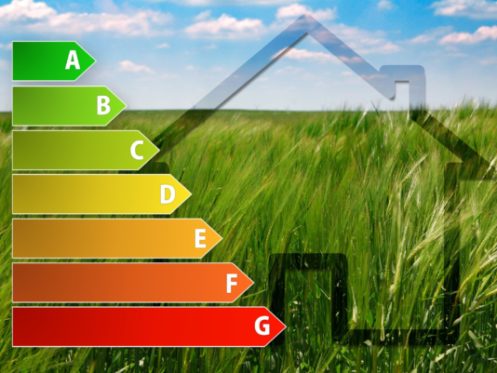Are you shopping for an HVAC system for your home or building? Buying a new HVAC system can be quite a daunting task, mainly because there are specific factors that you need to consider purchasing the most efficient HVAC system for your property.
One of the most significant factors that will affect the performance of your HVAC system is the SEER rating. Below is a guide on everything you need to know about the SEER rating and its importance to your HVAC system.
What Is SEER Rating?
SEER rating stands for Seasonal Energy Efficiency Ratio, and it measures the efficiency of your heating and cooling system. The higher the SEER rating is, the more energy efficient the HVAC system is. This means that an HVAC system with a high SEER rating will consume less energy and have lower energy costs than HVAC units with lower ratings.
When buying an HVAC system, always choose the one with the highest SEER rating because the system will have better temperature and humidity control, resulting in more comfort. To determine the SEER rating of an HVAC system, check the model number and the serial number of the system. The SEER rating is usually included among the serial and model numbers. You can always consult an HVAC expert who can help you identify the SEER rating of the system before you purchase it.
How Is the SEER Rating Calculated?
The seasonal energy efficiency ratio rating is calculated by dividing the cooling output of the HVAC system when the air conditioner is on by the total amount of electric energy input in the same period. In simpler terms, the SEER rating calculates the level of maximum efficiency of your HVAC system. It is similar to the miles per gallon measurement for your vehicle.
Here is a breakdown of the steps required to determine an HVAC system’s seasonal energy efficiency ratio.
Step 1
Identify your air conditioner’s British Thermal Units (BTUs) per hour. This is the cooling capacity of the HVAC system. For example, assume the HVAC system has 10,000 BTUs per hour as the cooling output.
Step 2
Find out the power unit of the HVAC system. This refers to the number of watts used each hour by your air conditioner. For example, let’s assume the HVAC system has a power input of 1,000 watts per hour.
Step 3
Calculate the total amount of BTUs used per hour by the HVAC system during the warm months. Some regions in the country may use four months, that is, 1,000 hours, and others may use up to eight months. Multiply this value with the cooling capacity. For example, if the annual cooling hours during the warm months are 2000, multiply it by the cooling capacity, for example, 2,000 X 10,000 = 20,000,000.
Step 4
Find the total annual BTUs per hour when the air conditioner is used by multiplying the power input by the total number of BTUs used per hour during warm months. According to the figures above, this will be 2,000 X 1,000 = 2,000,000.
Step 5
Divide the total number of BTUs used per hour during the warm months by the total annual BTUs when the air conditioner is used. This value is the SEER rating of your HVAC system. So, 20,000,000/2,000,000 = 10 SEER rating.
If the HVAC system is not efficient, it will have a low SEER rating. Old HVAC systems usually have a SEER rating of six. Most modern HVAC systems have a SEER rating of 13 and above with most HVAC systems ranging between 13 and 21 SEER ratings. You can also find highly efficient HVAC systems that have SEER ratings above 21.
Minimum SEER Rating Standards by Region
The United States Department of Energy (DOE) has set a minimum SEER rating standard on household appliances and HVAC systems to ensure maximum comfort and safety of citizens. Although these energy-efficiency standards are not one-size-fits-all, the DOE believes the measures will help save as much energy as possible in different regions.
Below are the minimum SEER rating standards in three regions within the United States. They include:
Southeast Region
The minimum SEER rating is 14 in the following regions:
- Arkansas
- Mississippi
- Virginia
- Hawaii
- Alabama
- Oklahoma
- Delaware
- Tennessee
- Louisiana
- Florida
- North Carolina
- Texas
- Georgia
- The District of Columbia
- Maryland
- South Carolina
- Kentucky
- The U.S. territories
Southwest Region
The minimum SEER rating is 14 in the following regions:
- New Mexico
- Arizona
- Nevada
- California
North Region
The minimum SEER rating is 13 in the remaining areas of the United States.
Is a High SEER Rating Worth It?
Yes. Although an HVAC system with a higher SEER rating may have a high upfront cost, it will provide you with a higher comfort level and lower energy costs each month. Additionally, a higher SEER rating HVAC unit comes with additional features like blower motors, variable speed compressors, and multiple cooling stages that allow the HVAC unit to stay on longer instead of turning on and off.
If you live in an area with high humidity or your home contains some generally cold rooms while others remain warm, then an HVAC system with a high SEER rating and a multi-stage cooling feature will add more comfort to your home.
If you live in a region with mild humidity, you can opt for an HVAC unit with a lower SEER rating. However, if you choose a lower SEER rating, ensure it is above your region’s minimum SEER rating standard. An HVAC expert will be able to recommend to you an HVAC system unit that can meet your requirements.
Also, remember that your HVAC system’s efficiency does not rely on the SEER rating alone. Other variables, like the size of your home, the ceiling height, and the current condition of the ductwork system, also play a significant role in determining your HVAC efficiency.
If you buy an HVAC system with a high SEER rating, but your home has clogged ductwork, and the AC tonnage is small compared to the size of your home, then the HVAC system’s performance will still be inefficient.
Call Huft Home Services Today
If you are looking for the best heating and air conditioning services in Sacramento, CA, then Huft Home Services is the team to work with. We are a locally owned and operated HVAC company whose main purpose is to ensure that the people in Sacramento are comfortable and safe in their homes throughout different seasons.
Additionally, we offer our customers 24/7 emergency services so that we can meet your HVAC needs as urgently as possible. In addition to providing top-tier HVAC services, we offer our clients plumbing and electrical assistance. Whichever services you, need Huft Home Services is ready and willing to help. Our experienced HVAC professionals will recommend the best SEER rating for your home and the best HVAC system to install on your property.
Call Huft Home Services today for assistance with any SEER rating question or problem you may have.



